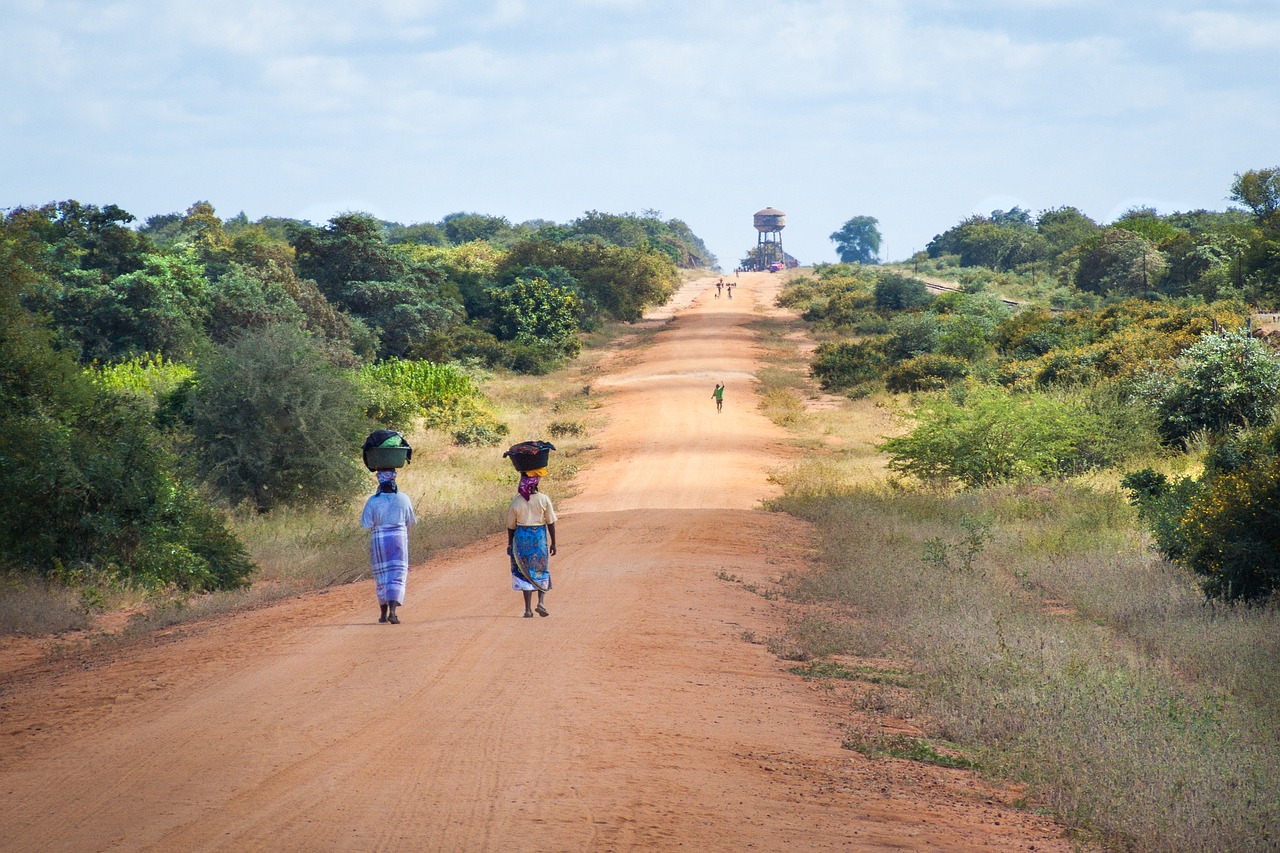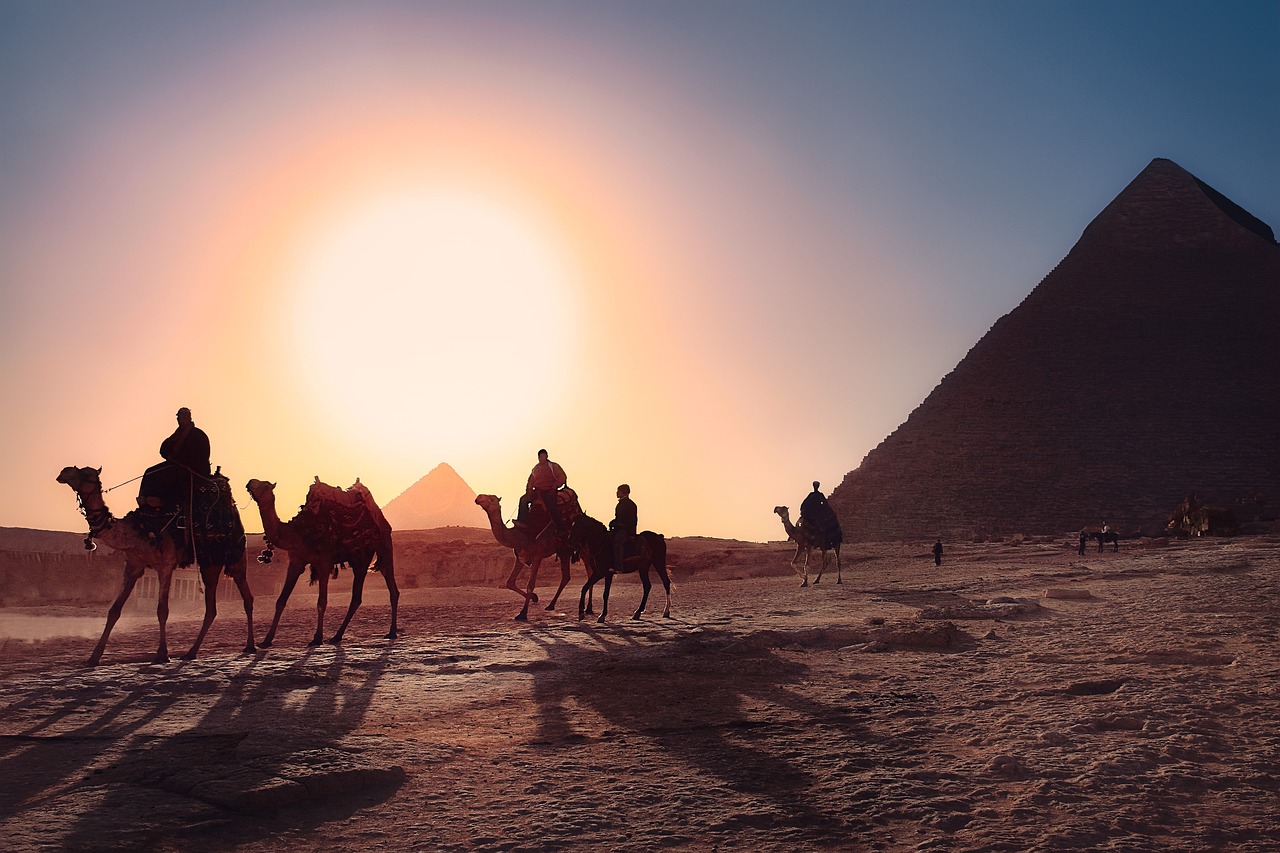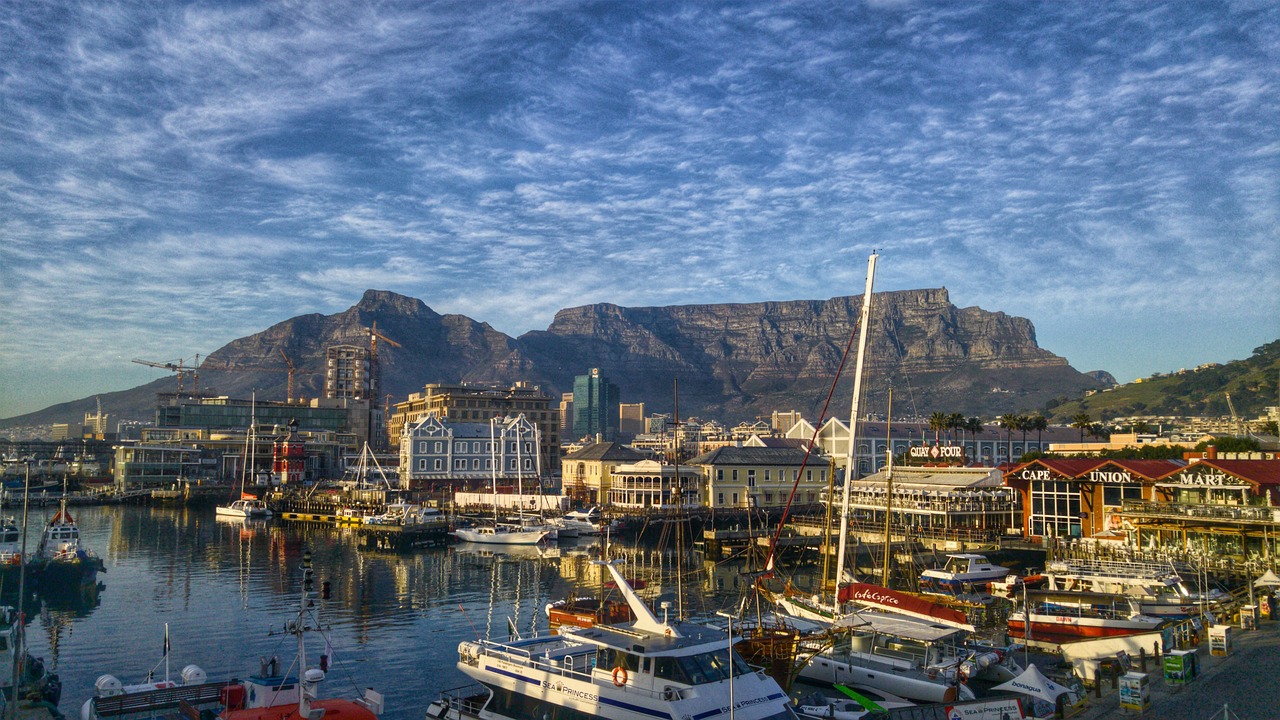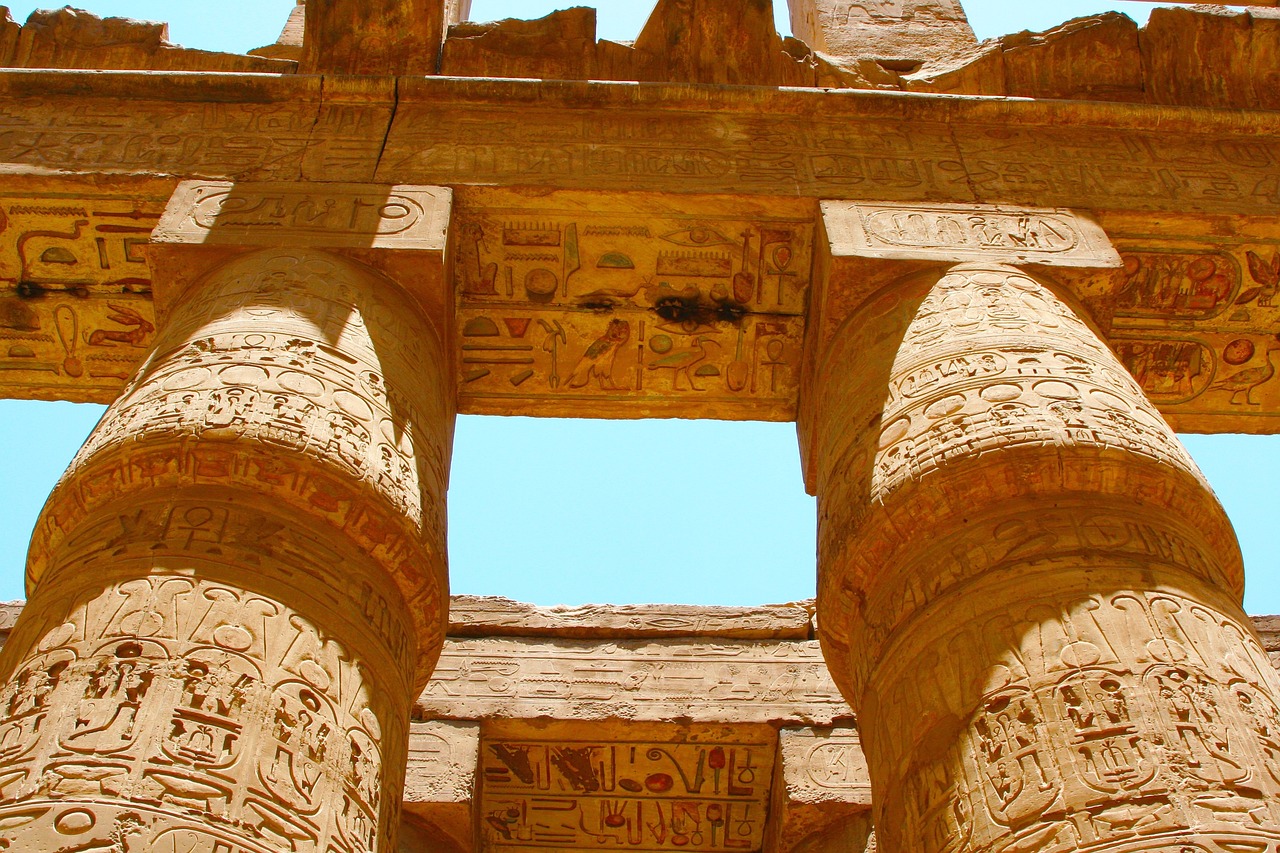Mozambique is a country located in southeastern Africa, bordered by Tanzania to the north, Malawi, Zambia, and Zimbabwe to the west, South Africa and Eswatini (formerly Swaziland) to the south, and the Indian Ocean to the east. The country’s capital and largest city is Maputo. Mozambique is known for its long coastline, wildlife reserves, rich cultural heritage, and diverse landscapes, including tropical forests, savannas, and sandy beaches.
Short History
Mozambique has a rich and complex history that dates back thousands of years. The region was home to various Bantu-speaking tribes, as well as Arab and Swahili traders who established trading posts along the coast.
In the late 15th century, Portuguese explorers arrived in Mozambique and began to establish trade relations with the local rulers. By the 16th century, Portugal had established a colonial presence in Mozambique, which would last until Mozambique gained independence in 1975.
During colonial rule, Mozambique was used primarily as a source of raw materials, including gold, ivory, and later, cashew nuts and other agricultural products. The country also served as an important transportation hub, with the port of Lourenço Marques (now Maputo) becoming a major gateway to the Indian Ocean.
In the 1960s, a nationalist movement emerged in Mozambique, calling for independence from Portugal. After years of struggle and armed conflict, Mozambique finally gained its independence in 1975.
Since independence, Mozambique has faced a variety of challenges, including civil war, economic struggles, and natural disasters such as droughts and floods. However, the country has also made significant progress in recent years, with a growing economy and a diverse cultural heritage that continues to draw visitors from around the world.
Architecture
Mozambique’s architecture is a mix of traditional African styles and colonial influences, particularly from Portuguese colonial rule from the 16th century until Mozambique gained independence in 1975.
In urban areas, particularly the capital city of Maputo, there are examples of Portuguese colonial architecture, such as the Maputo City Hall, the Train Station, and the Central Market. These buildings often feature neoclassical and art deco styles.
In rural areas, traditional African architecture can still be seen in the form of thatched-roofed huts and mud-brick buildings. In some areas, traditional Swahili architecture with carved wooden doors and intricate plasterwork can also be found.
In recent years, there has been a push to preserve Mozambique’s architectural heritage, particularly in the Old Town of Maputo, where efforts have been made to restore colonial-era buildings and protect them from further decay. Newer buildings in Mozambique also incorporate modern designs and sustainable building practices.
Museums and Galleries
Mozambique has a rich cultural heritage, and there are several museums and galleries throughout the country that showcase its history and traditions. Here are some of the most interesting museums and galleries to visit in Mozambique:
- National Art Museum – Located in Maputo, this museum houses a collection of contemporary and traditional Mozambican art.
- Núcleo de Arte – A gallery and cultural center in Maputo that showcases contemporary art and hosts events and performances.
- Museum of the Revolution – This museum in Maputo provides a historical overview of Mozambique’s struggle for independence.
- Island of Mozambique Museum – Located on the UNESCO World Heritage Site of the Island of Mozambique, this museum explores the history of the island and its role in the Indian Ocean trade.
- Natural History Museum – This museum in Maputo features exhibits on Mozambique’s biodiversity and natural history.
- Ethnographic Museum – Located in Nampula, this museum showcases the cultural traditions of Mozambique’s various ethnic groups.
- Catholic University of Mozambique Museum of Art and Archaeology – This museum in Beira houses a collection of ancient artifacts and works of art from Mozambique and the surrounding region.
Mozambique’s museums and galleries offer a fascinating look into the country’s history, art, and culture. Whether you’re interested in contemporary art, natural history, or the struggle for independence, there is something for everyone to discover in Mozambique’s cultural institutions.
Landmarks and Monuments
Mozambique is home to a variety of historical landmarks and monuments that showcase the country’s rich cultural heritage. Here are some of the most interesting landmarks and monuments to visit in Mozambique:
- Island of Mozambique – A UNESCO World Heritage Site, this island off the coast of Mozambique was an important trading center during the colonial era and features a variety of historic buildings and sites.
- Fortaleza de Maputo – A 19th-century fort in the capital city of Maputo that now serves as a museum.
- Casa de Ferro – A unique iron house designed by Gustave Eiffel in the city of Maputo.
- Mozambique Island Palace and Chapel – A historic palace and chapel on the Island of Mozambique that dates back to the 16th century.
- Cathedral of Our Lady of the Immaculate Conception – A striking neo-Gothic cathedral in Maputo that dates back to the early 20th century.
- Lighthouse of Pemba – A historic lighthouse in the northern city of Pemba that dates back to the colonial era.
- Monument to Samora Machel – A statue and monument in Maputo dedicated to Mozambique’s first president, Samora Machel.
Mozambique’s landmarks and monuments offer a fascinating glimpse into the country’s complex history and cultural heritage. Whether you’re interested in colonial architecture, religious sites, or political history, there is much to discover and explore in Mozambique’s historic sites and landmarks.
Parks and Green Spaces
Mozambique is home to a variety of beautiful parks and green spaces that offer visitors a chance to enjoy the country’s natural beauty and biodiversity. Here are some of the most notable parks and green spaces to visit in Mozambique:
- Gorongosa National Park – A vast wilderness area in central Mozambique that is home to a variety of wildlife, including elephants, lions, and hippos.
- Bazaruto Archipelago National Park – A group of islands off the coast of Mozambique that offer stunning beaches, coral reefs, and marine wildlife.
- Niassa Reserve – A vast wilderness area in northern Mozambique that is home to a variety of wildlife, including elephants, lions, and wild dogs.
- Quirimbas National Park – A coastal park in northern Mozambique that offers stunning beaches, coral reefs, and mangrove forests.
- Chimanimani National Reserve – A mountainous reserve in central Mozambique that offers hiking, birdwatching, and stunning views.
- Zinave National Park – A wilderness area in southern Mozambique that is home to a variety of wildlife, including elephants, lions, and wild dogs.
- Lago Niassa Reserve – A freshwater lake and wetland area in northern Mozambique that offers fishing, boating, and birdwatching.
Mozambique’s parks and green spaces offer a diverse range of natural beauty and biodiversity, from mountainous terrain to coastal beaches and wetlands. Whether you’re interested in wildlife, hiking, or just relaxing in a beautiful natural setting, there is something for everyone to enjoy in Mozambique’s parks and green spaces.
Shopping Districts
Mozambique is home to a variety of shopping districts, offering visitors a chance to purchase local crafts, textiles, and other products. Here are some of the most notable shopping districts to visit in Mozambique:
- FEIMA – A popular open-air market in Maputo that offers a variety of traditional crafts, textiles, and other products.
- Mercado Central – A historic market in Maputo that features fresh produce, seafood, and other goods.
- Polana Shopping Center – A modern shopping center in Maputo that features international brands and luxury goods.
- Baixa – A historic shopping district in Maputo that features a variety of shops and cafes.
- Shoprite – A South African chain supermarket that has locations throughout Mozambique, offering groceries and household items.
Mozambique’s shopping districts offer a diverse range of shopping experiences, from traditional markets to modern shopping centers. Whether you’re interested in local crafts and textiles or international brands and luxury goods, there is something for everyone to discover in Mozambique’s shopping districts.
Food and Drink
Mozambique is a country with a rich culinary heritage, influenced by the region’s history and diverse cultural traditions. Here are some of the most popular foods and drinks to try in Mozambique:
- Piri-piri chicken – A spicy grilled chicken dish marinated in a fiery sauce made from piri-piri chili peppers, garlic, and lemon juice.
- Matapa – A traditional dish made from cassava leaves, coconut milk, and ground peanuts, often served with rice.
- Peri-peri sauce – A spicy sauce made from piri-piri chili peppers, garlic, and vinegar, often used as a marinade or condiment.
- Feijão com arroz – A simple but hearty dish of beans and rice, often served with grilled meat or fish.
- Chamussas – A Mozambican twist on the Indian samosa, filled with a variety of meats, vegetables, and spices.
- Cashew nuts – Mozambique is one of the world’s largest producers of cashew nuts, which are often roasted and salted as a popular snack.
- 2M Beer – A popular Mozambican beer brewed in the capital city of Maputo.
- Matata – A seafood stew made with clams or other shellfish, coconut milk, and spices.
- Vinho Verde – A Portuguese-style white wine that is popular in Mozambique.
- R&R – A refreshing drink made from a mix of raspberry soda and rum.
Mozambique offers a variety of delicious and unique dishes and drinks to try, influenced by the country’s diverse cultural heritage and natural bounty. Whether you’re a fan of spicy food, seafood, or just looking for a refreshing drink, there is something for everyone to enjoy in Mozambique’s cuisine.
Transportation
Mozambique is a large country with a variety of transportation options, ranging from buses and taxis to domestic flights and private vehicles. Here are some of the most common ways to move around Mozambique:
- Buses – Mozambique has a network of long-distance buses that connect major cities and towns throughout the country. These buses can be crowded and uncomfortable, but they are generally reliable and affordable.
- Taxis – Taxis are a common mode of transportation in Mozambique, especially in urban areas. They can be hailed on the street or arranged through a hotel or taxi stand, and fares should be negotiated in advance.
- Minibuses – Minibuses are another common mode of transportation in Mozambique, especially for shorter trips within cities or towns. These vehicles can be crowded and uncomfortable, but they are generally affordable and convenient.
- Domestic flights – Mozambique has several domestic airlines that offer flights between major cities and tourist destinations. While more expensive than other transportation options, flying can be a good way to save time and see more of the country.
- Private vehicles – For those who prefer more flexibility and independence, renting a car or hiring a private driver can be a good option. However, driving in Mozambique can be challenging due to poor road conditions and aggressive driving habits.
Mozambique offers a variety of transportation options for visitors, depending on their budget and travel preferences. While some options can be crowded or uncomfortable, they are generally affordable and reliable, allowing visitors to explore the country and experience its unique cultural and natural heritage.
Safety
Mozambique, like any country, has its share of safety concerns that visitors should be aware of. Petty crime, such as pickpocketing and theft, can occur in urban areas, particularly in Maputo, so it’s important to take basic precautions like keeping valuables out of sight and avoiding carrying large amounts of cash.
Mozambique also has a history of political instability and armed conflict, particularly in the northern parts of the country. Visitors should exercise caution when traveling in these areas and stay informed about current events and any potential risks.
Additionally, Mozambique is prone to natural disasters such as floods and cyclones, particularly during the rainy season from November to April. Visitors should be aware of the potential for these events and take appropriate precautions, such as monitoring weather reports and following the advice of local authorities.
Overall, while Mozambique does have some safety concerns, with appropriate caution and preparation, visitors can enjoy a safe and rewarding experience in this beautiful country.
Expensive or Cheap
Mozambique can be relatively expensive compared to other countries in the region, particularly for travelers who are not used to African prices. This is partly due to the country’s reliance on imports, which can drive up the cost of goods and services.
Accommodation in Mozambique can be particularly expensive, especially in tourist areas such as the Bazaruto Archipelago and the Quirimbas Islands. However, there are also more affordable options available, including guesthouses and backpacker hostels.
Food and drink prices in Mozambique can also vary depending on where you eat and what you order. Local street food can be quite affordable, while meals at more upscale restaurants can be relatively expensive. Alcoholic beverages can also be expensive due to taxes and import fees.
While Mozambique can be relatively expensive compared to other countries in the region, there are still affordable options available for travelers on a budget. With some planning and research, it is possible to enjoy a rewarding and affordable experience in Mozambique.
Best Time to Travel
The best time to travel to Mozambique is during the dry season, which runs from May to October. During this time, the weather is generally sunny and dry, with less humidity and rainfall than during the wet season. This makes it an ideal time for outdoor activities such as snorkeling, diving, and game viewing.
Temperatures during the dry season can be hot, particularly in October, but are generally more moderate than during the wet season. This can make it a more comfortable time to travel, particularly for visitors who are not used to hot and humid weather.
The wet season in Mozambique runs from November to April, with heavy rainfall and high humidity. While this can make for lush scenery and fewer crowds, it can also make travel more challenging, particularly in more remote areas where roads may become flooded and impassable.
Overall, the best time to travel to Mozambique depends on your interests and travel preferences, but the dry season from May to October generally offers the most favorable conditions for outdoor activities and sightseeing.
Date Ideas
Mozambique is a beautiful country with a diverse range of activities and attractions to enjoy. Here are some date ideas for couples visiting Mozambique:
- Sunset dhow cruise – Take a traditional dhow boat out on the water and watch the sunset over the Indian Ocean.
- Beach picnic – Pack a romantic picnic and head to one of Mozambique’s beautiful beaches for a day of sun, sand, and relaxation.
- Snorkeling or diving – Explore the colorful underwater world of Mozambique’s coral reefs with a guided snorkeling or diving tour.
- Horseback riding – Take a romantic horseback ride along the beach or through the countryside.
- Game drives – Embark on a safari-style game drive in one of Mozambique’s national parks, such as Gorongosa National Park or Niassa Game Reserve.
- Spa day – Relax and unwind with a couples’ spa day at one of Mozambique’s luxury resorts.
- Cultural tour – Learn about Mozambique’s rich cultural heritage with a guided tour of historic sites, museums, and local communities.
- Fishing trip – Head out on a deep sea fishing trip and try your luck catching some of Mozambique’s famous seafood.
- Local market visit – Explore Mozambique’s vibrant local markets, sampling fresh produce and handmade crafts.
- Romantic dinner – Indulge in a romantic dinner at one of Mozambique’s beachside restaurants, enjoying fresh seafood and stunning ocean views.
Mozambique offers a variety of romantic and exciting activities for couples to enjoy, from relaxing on the beach to exploring the country’s natural and cultural heritage.
Fun and Interesting Facts
Mozambique is a beautiful country located in southeastern Africa, with a rich cultural heritage, stunning natural scenery, and a diverse range of wildlife. Here are some fun and interesting facts about Mozambique:
- Mozambique is known for its beautiful beaches, including the popular tourist destination of Ponta do Ouro.
- The country is home to a number of national parks, including Gorongosa National Park and Niassa Game Reserve, which are known for their diverse range of wildlife.
- Mozambique is a former Portuguese colony, and as a result, Portuguese is still widely spoken in the country today.
- Mozambique is known for its vibrant music scene, with traditional styles like marrabenta and marrabenta fusion blending with contemporary influences.
- The country is also known for its cuisine, with fresh seafood, coconut milk, and spices featuring prominently in many dishes.
- Mozambique is home to a number of historic sites and landmarks, including the Island of Mozambique, which is a UNESCO World Heritage Site.
- Mozambique has a rapidly growing economy, with a focus on natural resources such as coal and natural gas.
- The country is also known for its traditional crafts, including intricate basket weaving and wood carving.
- Mozambique is a popular destination for surfing, with waves that are suitable for both beginners and experienced surfers.
- The country is also known for its stunning coral reefs, which make it a popular destination for diving and snorkeling.
In conclusion, Mozambique is a fascinating and diverse country that offers visitors a wide range of experiences, from its stunning natural beauty to its rich cultural heritage and vibrant music and food scenes.



